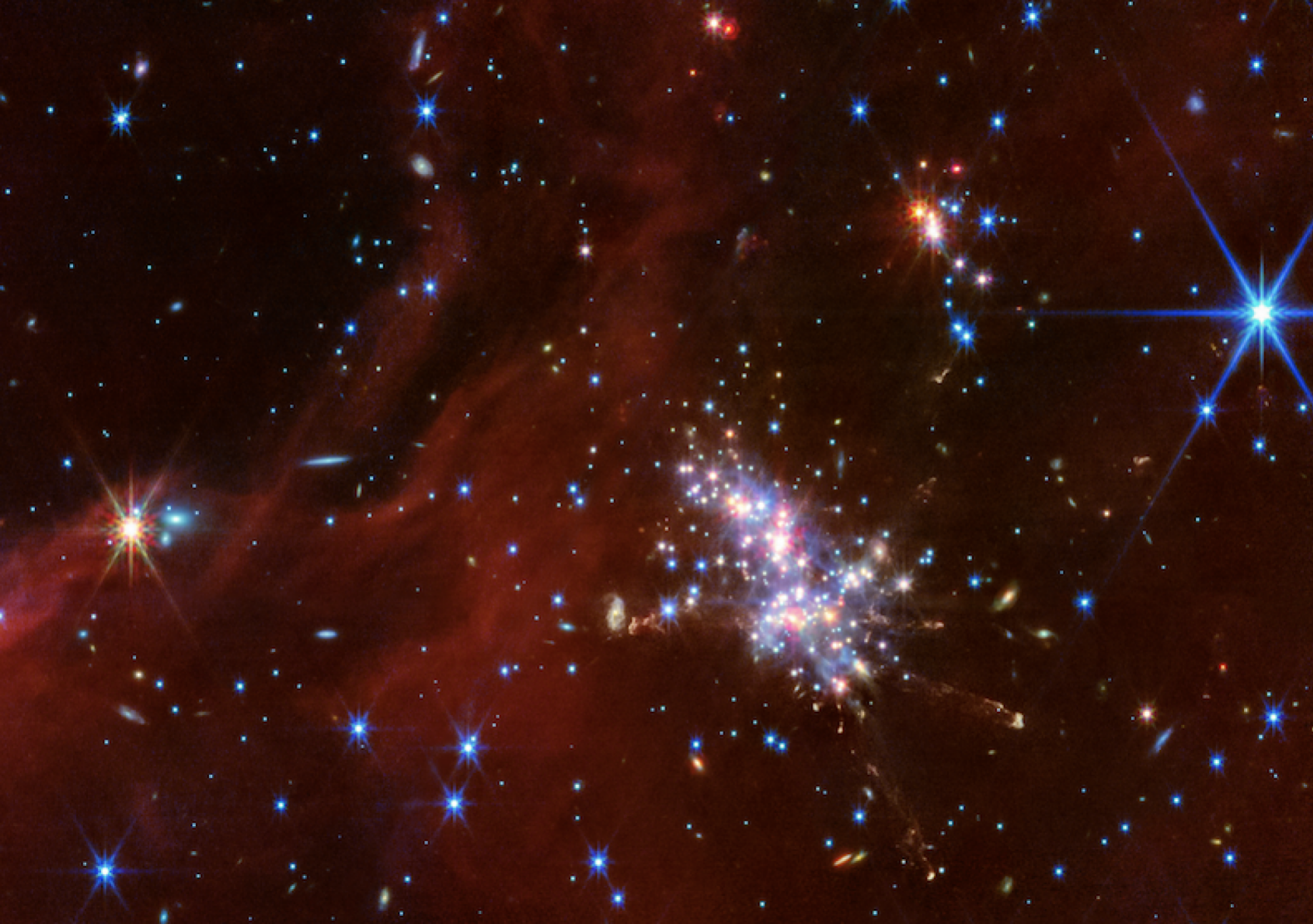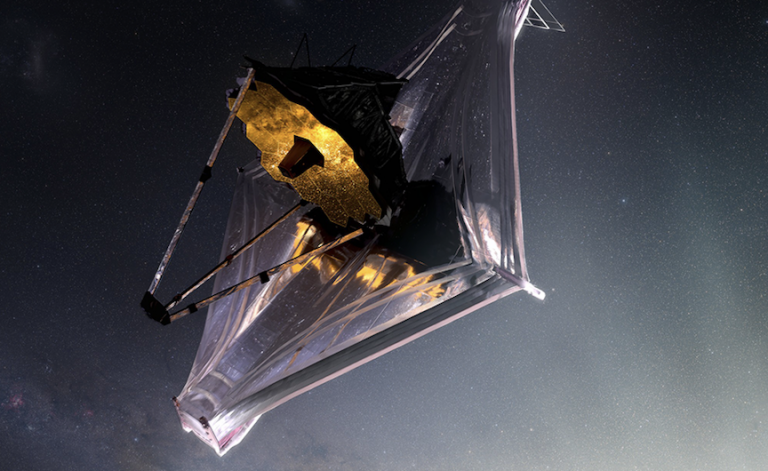
The far outskirts of our galaxy are teeming with activity.
Astronomers pointed the powerful James Webb Space Telescope at a distant zone dubbed the “Extreme Outer Galaxy,” and zoomed in on dense cosmic clouds containing clusters of stars. In unprecedented resolution of this region, they spotted vibrant star formation, and potent jets of material ejecting from these hot objects.
“What was fascinating and astounding to me from the Webb data is that there are multiple jets shooting out in all different directions from this cluster of stars,” NASA scientist Mike Ressler, who led observations, said in a statement. “It’s a little bit like a firecracker, where you see things shooting this way and that.”
You can see this activity below in a region of Digel Cloud 2S. Amid this cluster of young stars are jets zipping out from the cluster. Young stars emit these jets of gas and dust from their poles, which travel into space.
“It’s a little bit like a firecracker, where you see things shooting this way and that.”
And there’s added cosmic eye candy. Beyond these dynamic stars at the edge of the Milky Way galaxy, you can spot a diversity of distant galaxies, shown in reddish and greenish colors. Many of these are spiral galaxies, like ours.

Credit: NASA / ESA / CSA / STScI / M. Ressler (JPL)
The “Extreme Outer Galaxy” is located over 58,000 light-years (a light-year is almost 6 trillion miles) from the center of our galaxy. Earth, meanwhile, is some 26,000 light-years from the center.
This latest Webb research, published in the peer-reviewed Astronomical Journal, provides novel observations in scientists’ quest to fully grasp how stars form in different galactic environments.

Credit: NASA / JPL-Caltech / R. Hurt (SSC / Caltech)
The Webb telescope’s powerful abilities
The Webb telescope — a scientific collaboration between NASA, ESA, and the Canadian Space Agency — is designed to peer into the deepest cosmos and reveal new insights about the early universe. But it’s also examining intriguing planets in our galaxy, along with the planets and moons in our solar system.
Here’s how Webb is achieving unparalleled feats, and likely will for decades to come:
– Giant mirror: Webb’s mirror, which captures light, is over 21 feet across. That’s over two-and-a-half times larger than the Hubble Space Telescope’s mirror. Capturing more light allows Webb to see more distant, ancient objects. The telescope is peering at stars and galaxies that formed over 13 billion years ago, just a few hundred million years after the Big Bang. “We’re going to see the very first stars and galaxies that ever formed,” Jean Creighton, an astronomer and the director of the Manfred Olson Planetarium at the University of Wisconsin–Milwaukee, told Mashable in 2021.
– Infrared view: Unlike Hubble, which largely views light that’s visible to us, Webb is primarily an infrared telescope, meaning it views light in the infrared spectrum. This allows us to see far more of the universe. Infrared has longer wavelengths than visible light, so the light waves more efficiently slip through cosmic clouds; the light doesn’t as often collide with and get scattered by these densely packed particles. Ultimately, Webb’s infrared eyesight can penetrate places Hubble can’t.
“It lifts the veil,” said Creighton.
– Peering into distant exoplanets: The Webb telescope carries specialized equipment called spectrographs that will revolutionize our understanding of these far-off worlds. The instruments can decipher what molecules (such as water, carbon dioxide, and methane) exist in the atmospheres of distant exoplanets — be they gas giants or smaller rocky worlds. Webb looks at exoplanets in the Milky Way galaxy. Who knows what we’ll find?
“We might learn things we never thought about,” Mercedes López-Morales, an exoplanet researcher and astrophysicist at the Center for Astrophysics-Harvard & Smithsonian, told Mashable in 2021.
Already, astronomers have successfully found intriguing chemical reactions on a planet 700 light-years away, and have started looking at one of the most anticipated places in the cosmos: the rocky, Earth-sized planets of the TRAPPIST solar system.





















0 Comments